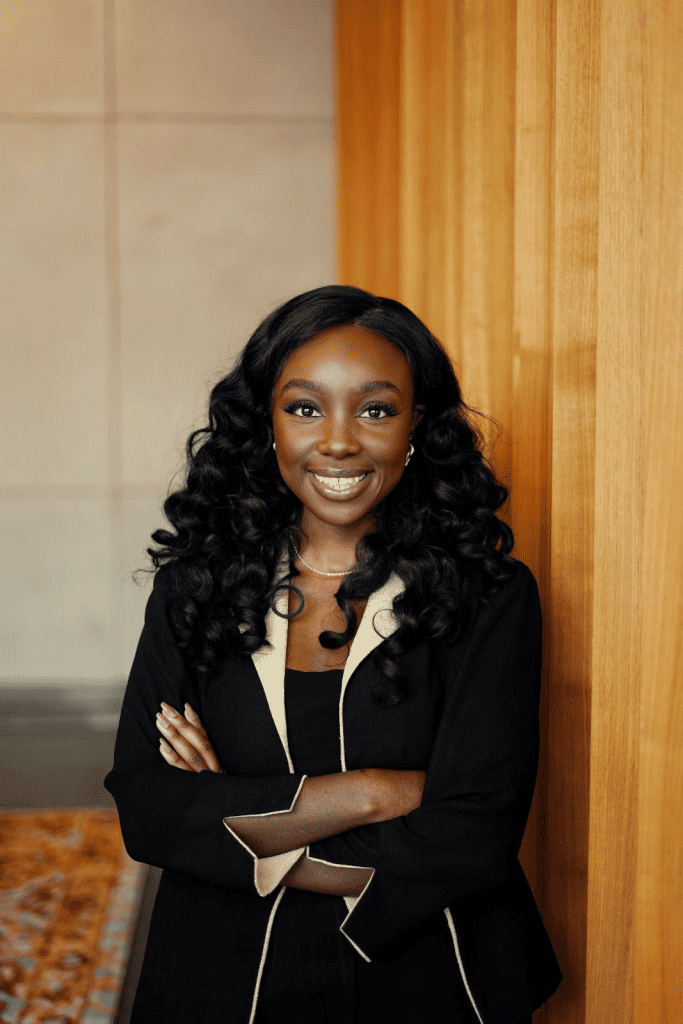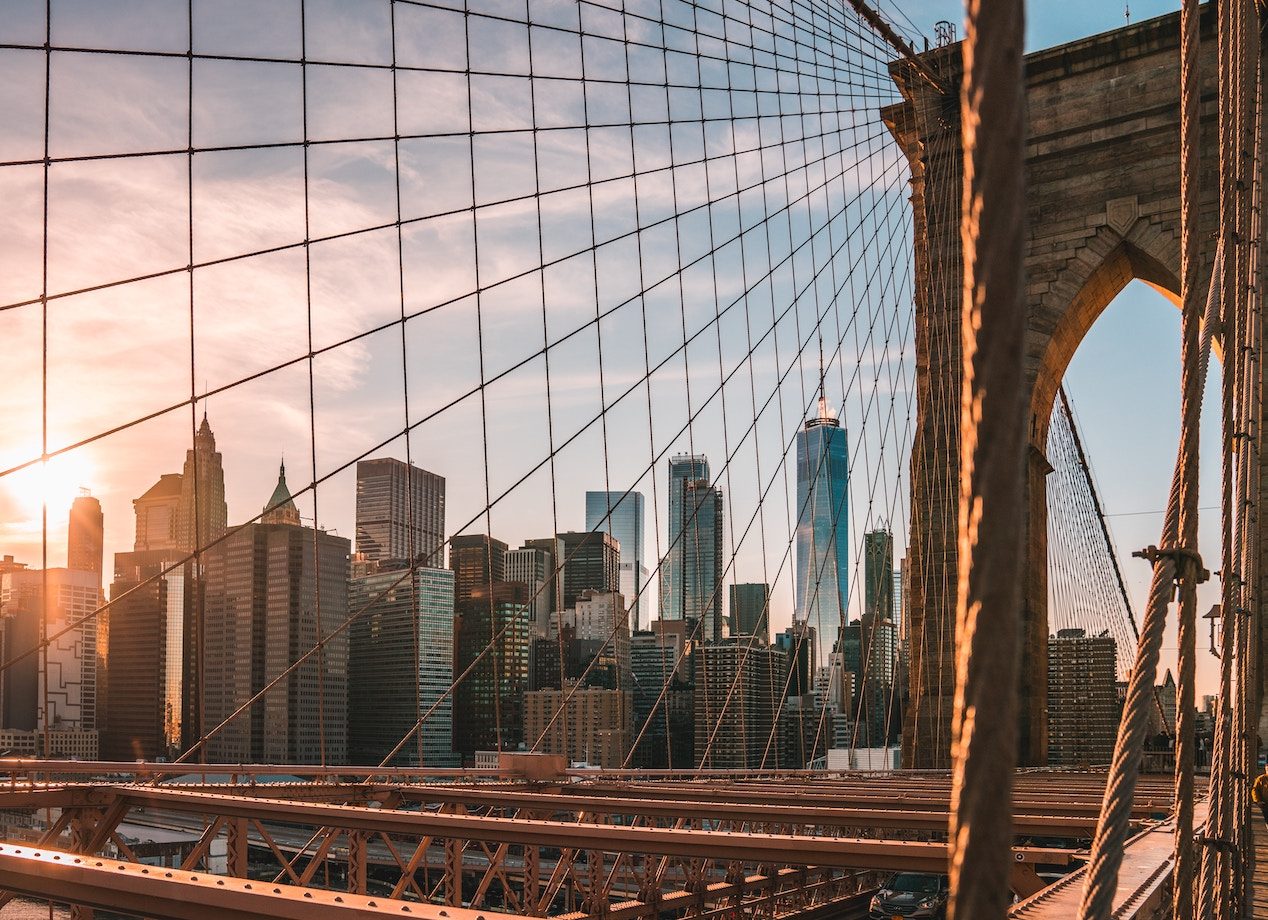MA Art Business alumna Adefolakunmi Adenugba has made waves in the art market through her company ISE-DA, an art advisory focused on cultural stewardship of Black contemporary art. Adefolakunmi’s extensive work that includes cultivating new Black art collectors has also landed her on the 2024 Forbes 30 Under 30 list.
 What drove your decision to apply for a Sotheby's Institute MA program and what did you study?
What drove your decision to apply for a Sotheby's Institute MA program and what did you study?
I applied to Sotheby's Institute of Art to learn more about the commercial art market and the business of art. I wanted to gain experience to create my company, ISE-DA, which was just an idea in 2018.
Before attending my MA program, I undertook internships at museums, including the High Museum of Art in Atlanta and the National Gallery of Art in Washington, D.C. I also had experience in consulting, so I came to Sotheby's Institute with a unique mix of art and business skills. Pursuing an MA in Art Business was the natural next step.
I received a Master in Arts in Art Business at Sotheby's Institute, and my courses included Art Law, International Art Markets, and Art Advisory and Collection Building. I also developed a Curatorial Thesis focused on Black Speculative Art theory, Afrosurrealism, and Afrofuturism.
Looking back, how did the MA Art Business program at Sotheby's Institute equip you with the tools and knowledge to navigate the art industry?
The MA Art Business program gave me a greater understanding of the different forces at play in the art market and how they work together for an artist and their career. It also made me more knowledgeable about the different art-related career opportunities available.
Hearing from industry guest speakers, from Amy Cappellazzo to Jerry Saltz, exposed me and my fellow students to the different impacts professionals can make in the industry. It was empowering to be surrounded by professionals with various career experiences through our faculty, like Judith Prowda and Claude Grunitzky. We had a unique experience learning about art not only from a cultural and historical perspective, but also from a legal, financial, and market perspective.
What motivated you to establish your company, ISE-DA, and how does it reflect your vision for the future of art in Black communities?
I had the idea for ISE-DA in 2018. I was working in management consulting and using my free time to visit museums, galleries, and fairs to stay involved in the art world following my art history degree and museum internships. My peers worked in VC, tech, and private equity, and were investing in real estate. I encouraged them to make cultural investments in art. Many Black people expressed concerns about the lack of access and support with purchasing art. I found myself in a niche position with my background and work experience in art history and business. I could relate to and understand the cultural needs of working Black professionals and recognized the barriers to entering the field of collecting. My vision is for Black communities to have sustained and consistent access to work by Black artists internationally.
You were just named one of Forbes' 30 Under 30 on the 2024 Art & Style list. What does this recognition mean for you professionally and personally?
Professionally, the recognition provided increased exposure for ISE-DA. Many people have reached out with interest and wanting to learn more. It also signaled to Black professionals interested in art and collecting that there is an advisory that can support them. Partnerships have developed as a result, and we’ve onboarded new clients. The response to being recognized on the list has been wonderful and has provided me with a larger network of like-minded individuals that I can learn from. Being named on the Forbes list confirmed that I am on track with ISE-DA's goals, that what I am building is valuable, and that it is necessary.
Can you discuss the challenges and rewards of cultivating a new generation of Black collectors and the impact this has on cultural hubs in Black communities?
One reward is the rich variety of people and artists with whom we are building relationships. As ISE-DA has an international outlook, we actively reach out to new people, learning more about new cultural landscapes across the diaspora. It has been exciting to connect new collectors and younger Black professionals with Black artists and galleries outside of America. I love that while we expand our horizons, we provide this same opportunity for others. A second reward, and for me the most salient, is being able to culturally enrich the lives of others. Some clients and members of our New Collectors' Program have been interested in exploring Black art further but have never had the time or opportunity to do so.
One challenge is that we must consistently try new things and be open to pivoting. We try to find new locations, build new partnerships, and test new modes of engagement. An example is when we tried a new programming technique for our panels with the goal of being more interactive and engaging. At first, it was nerve-wracking and seemed risky, but it was a great success that appealed to our target demographic and allowed our programming to blossom. As a team, we have become less risk-averse and more resilient because we recognize that taking risks is integral to making ISE-DA successful.
One of ISE-DA's core values is the reimagination of the art ecosystem and art engagement. What does reimagination entail and why is it so crucial to the advisory's mission?
At ISE-DA, our aim is to add an exploratory nature and creative outlook to our advisory. We launched in 2020 at the height of the pandemic, beginning by developing online projects about the historical impact of Black art, whether in developing theory or supporting liberation movements. These projects gave us our first clients and paved our advisory's foundation. It broadened the possibilities of what mission-aligned services the advisory could offer. As a result, the advisory has organically expanded into supporting corporate and organizational clients with launching strategic initiatives, special projects, and educational programming on Black contemporary art.
We also reimagine what the process of exploring art could be. As a former art history student, I studied art from a Western lens. At ISE-DA, we introduce art to clients new to this art world from Black perspectives. For me, Black art is more than something lovely to hang on the wall. It has provided so much richness for Black communities historically and presently, which we communicate through our work. For us to successfully achieve the impact we are trying to make, we must reimagine traditional modes of engagement and understanding.
What advice or tips would you give to Sotheby's Institute applicants?
Have a plan. The Sotheby's Institute of Art experience was enriching and impactful for me because, before I started, I developed a list of goals I wanted to achieve through the program. I then expanded this list into smaller objectives I wanted to fulfill, people I wanted to meet, and concepts I wanted to learn, which helped me maintain my focus. Be deliberate with every decision you make with your studies.
Build your art expertise with our Master's programs.
